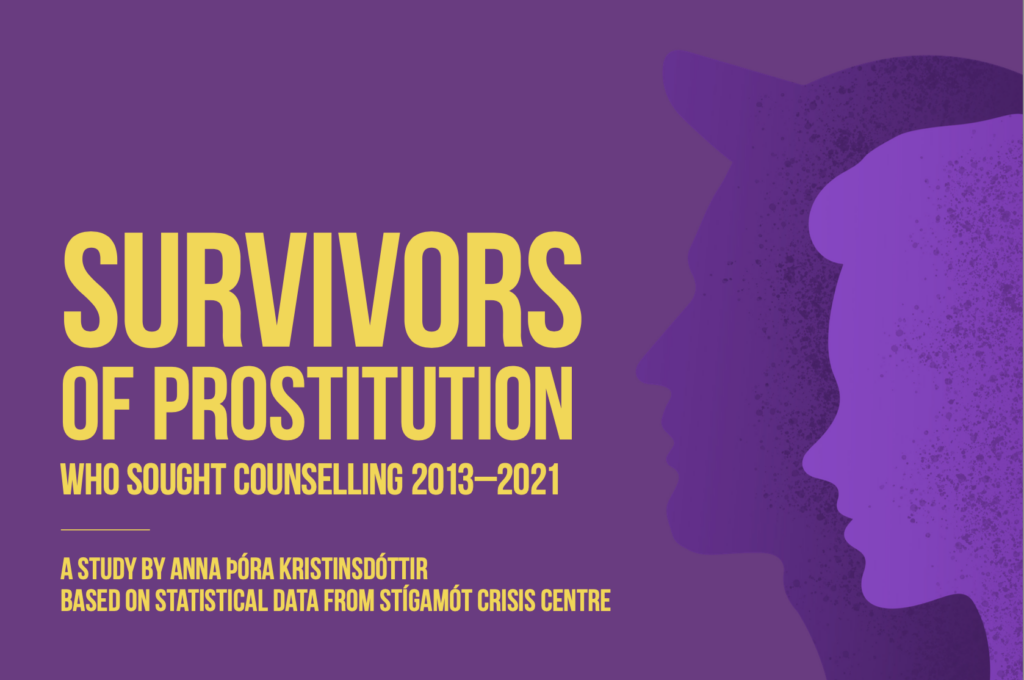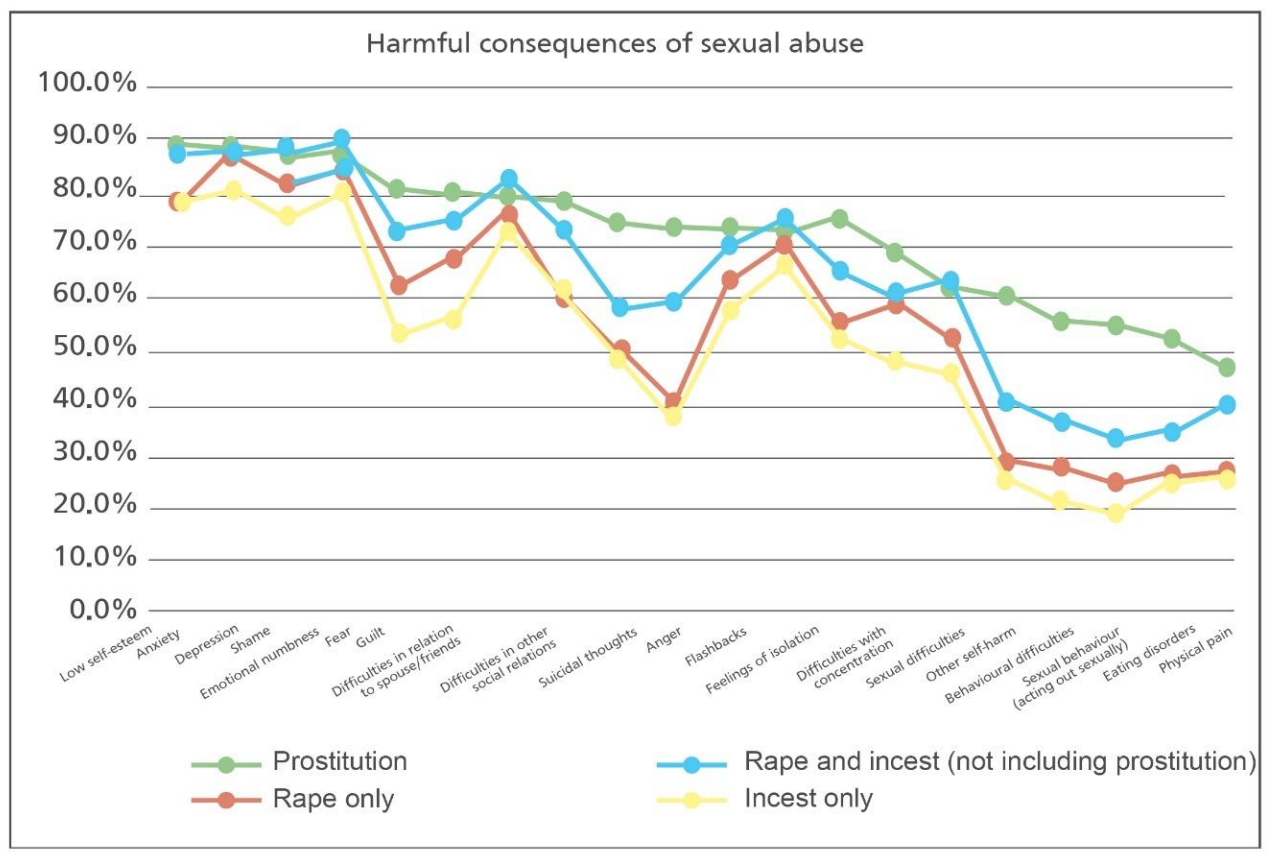PROSTITUTION IN ICELAND
Prostitution takes place in Iceland even though the limited research available does not indicate its scale. Icelandic legislation supports the abolitionist approach. Stígamót offers counselling and self help groups for survivors of prostitution and has continuously gathered insights and evidence about the effects of prostitution on the survivors.

Anna Þóra Kristinsdóttir conducted an analysis based on statistical data from Stígamót crisis centre on survivors of prostitution. It refers to individuals who sought counselling between 2013 and 2021, and it looks at how prostitution affects the well-being of its survivors. A summary and main conclusions of the study are available here
The main conclusions are:
- 60.7% of female survivors of prostitution have attempted suicide and are much more likely than survivors of other types of sexual violence to have attempted or contemplated suicide.

- Survivors of prostitution are much more likely to struggle with self-harm, eating disorders and physical pain than survivors of other types of sexual violence.
- 92% of survivors of prostitution who have sought Stígamót’s services have also been subjected to other types of sexual violence. 80% were younger than 18 years old when they first experienced sexual violence.

- 50% of survivors of prostitution have not completed any education beyond primary school and 50% are on disability, in rehabilitation or ill. This has a significant impact on the opportunity for this group to earn an income, and it can be assumed that there is a relationship between reduced earning potential and being forced into prostitution.

- Many survivors of prostitution have been subjected to severe sexual violence during their lives. 76% have been raped and just under 46% have been subjected to incest. Female survivors of prostitution are much more likely than survivors of other types of such violence to have been subjected to threats, bodily injury, and to have weapons used on them by perpetrators of sexual violence. Just over 25% have been gang raped and just over 26% have been drug raped.
- Of the nine women who sought the services of Stígamót because of prostitution during the time period, but had not experienced other sexual violence, nearly all of them struggled with low self-esteem, shame, anxiety, depression, and difficult relationships with spouse and friends.
- Prostitution survivors’ cases were more likely to have become child protection cases than other sexual violence cases. Those cases do not necessarily involve prostitution itself, but rather some other form of sexual violence. Cases involving 24% of perpetrators of sexual violence against prostitution survivors have thus been referred to child protection services. This group was also more likely to have reported sexual violence to the police than other survivor groups.
- Prostitution survivors rarely tell the people closest to them that they are engaging in prostitution, and are much less likely than survivors of other crimes to tell family members.
- Survivors of prostitution are more likely to seek the support of a social worker and other social services than survivors of other types of sexual violence.
- Often, survivors of prostitution have not sought other professional support before coming to Stígamót. However, it is worth noting that those who have sought the support of other professionals due to sexual violence have often not reported engaging in prostitution, which underscores the shame that prostitution survivors deal with.


For further information please contact us.




